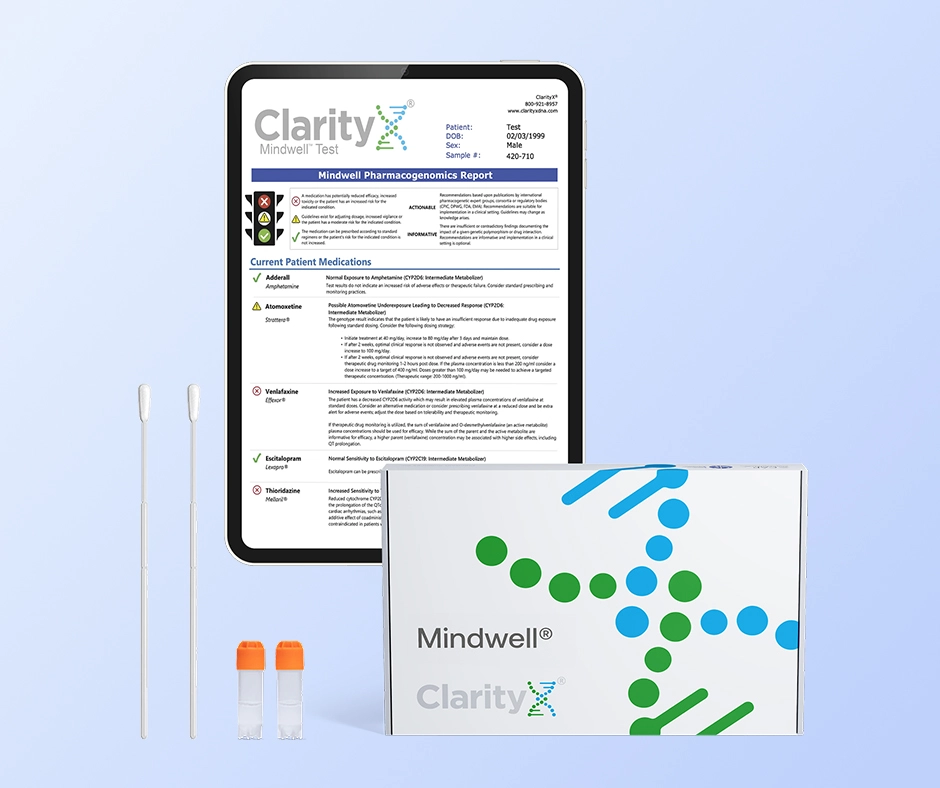Key Highlights
- Dutasteride is a prescription medication that can treat male pattern baldness. It can slow, stop, or even reverse hair loss.
- You may see noticeable results in about 3 to 6 months. During this time, hair loss decreases and early regrowth may appear, especially on the crown.
- This medication works by blocking the conversion of testosterone to DHT. DHT is a hormone that plays a big role in shrinking hair follicles.
- For optimal results, take it daily and be patient, as changes can take time.
Introduction
If you’re experiencing hair loss and looking for good treatment options, you may have come across dutasteride. Dutasteride is a prescription medication often used to help manage an enlarged prostate that can also have some positive effects for hair loss. It takes some time to develop results, however.
In this article, we will take a closer look at dutasteride, including its potential benefits for hair loss, the duration of the treatment process, and factors that may affect its safety and effectiveness.
Understanding Dutasteride and Its Mechanism
Dutasteride, known as Avodart, is a prescription medicine primarily used to treat benign prostatic hyperplasia (BPH) under the brand name Avodart. It functions by inhibiting the conversion of testosterone into dihydrotestosterone (DHT). While this can be helpful for managing prostate growth, DHT is also a hormone that can contribute to hair loss by binding to hair follicles, causing them to shrink and halting hair production.
By blocking DHT, Dutasteride can help prevent further hair loss and promote thicker, healthier hair growth. Effective for male pattern baldness and androgenetic alopecia, it is a popular non-surgical option for hair restoration among many men, as DHT binds to androgen receptors and plays a significant role in hair loss.
The Role of Dutasteride in DHT Inhibition
Dutasteride is a type of medication known as a 5-alpha reductase inhibitor. These drugs work by influencing the 5-alpha reductase enzyme, which plays a role in converting testosterone into DHT, a type of hormone. By inhibiting this enzyme, Dutasteride reduces DHT levels and the overall concentration of DHT in the blood.
Lowering DHT levels is important because DHT is a key contributor to male pattern baldness. When DHT levels are high, they attach to receptors in the hair follicles on the scalp. This attachment leads to a series of changes that shrink the hair follicles, making them smaller and weaker.
As time passes, these smaller follicles produce thinner and shorter hairs until they stop making hair completely. This results in noticeable hair loss. By preventing the change of testosterone into DHT, Dutasteride stops this process. It helps keep the hair follicles from shrinking and encourages hair regrowth.
How Dutasteride Influences Hair Growth Cycle
To understand how Dutasteride affects hair growth, we first need to know about the hair growth cycle, which consists of three parts: the anagen phase (growth), the catagen phase (transition), and the telogen phase (rest). During the anagen phase, lasting several years, hair follicles produce new hair.
DHT disrupts this cycle by shortening the anagen phase. When this occurs, fewer hairs grow, resulting in thinner hair and potential hair loss. Dutasteride lowers DHT levels, which helps prolong the anagen phase, allowing hair follicles more time to produce new hair.
A longer anagen phase, along with preventing further follicle shrinkage, makes Dutasteride effective for hair regrowth. With regular use of Dutasteride, many people experience significant improvements in hair density and overall hair health.
Comprehensive Guide to Using Dutasteride
Using Dutasteride correctly involves understanding the appropriate dosages, knowing how to apply it, and maintaining consistency for optimal results. It’s essential to consult a qualified healthcare professional before starting Dutasteride. This ensures that any health issues are addressed and that it aligns with your hair loss treatment goals.
Keep in mind that Dutasteride is a prescription medication. Obtaining it from a trustworthy source and adhering to your doctor’s instructions helps ensure safety and effectiveness during your treatment.
Recommended Dosages and Application Methods
The usual oral dose of dutasteride for hair loss is often 0.5 mg. You should take it once a day by mouth. Dutasteride capsules need to be swallowed whole with water, and you can take them with or without food.
It's crucial to follow your doctor's advice and not exceed the prescribed dosage. Taking more will not accelerate hair growth and may increase the risk of side effects. Maintain consistency with your doses. Aim to take it at the same time each day to ensure the medicine works effectively in your body.
If you forget to take a dose, don't take two doses at once. Just take your next dose as planned. It's beneficial to discuss any questions or concerns with your healthcare provider regarding the dosage or any potential side effects.
Best Practices for Consistent Results
Achieving good results with Dutasteride requires following a few simple steps. First, try to take your medicine at the same time every day. This helps maintain a steady level of Dutasteride in your body, enhancing its effectiveness.
Second, be patient and realistic about what to expect. While some people may see results faster, it generally takes a few months to notice changes in hair growth. Remember, hair regrowth occurs slowly.
Finally, continue communicating with your doctor throughout your Dutasteride treatment. Report any side effects or concerns immediately. This way, they can assess whether the medication is effective and make any necessary adjustments to your treatment plan.
Early Effects of Dutasteride on Hair Loss
The full effects of Dutasteride usually take some time to show. Still, it’s normal to wonder about the initial changes. In the first few weeks, Dutasteride begins to alter hormone levels, leading to decreased DHT levels. However, because hair cycles are spread over several months, the ultimate effect on hair growth is somewhat delayed.
What to Expect Within the First Three Months
During the first three months of treatment, DHT production is immediately limited, allowing the hair follicle cycle time to adjust. It’s unlikely you’ll see much of a visual change during this time frame—hair shedding can continue during this time.
However, behind the scenes, the reduced DHT levels are beginning to promote more active and longer growth cycles for hair follicles.
Mid-Term Results from Dutasteride Usage
As you continue with Dutasteride treatment, positive results become more likely to appear between 3 to 6 months. The hair follicles have had time to adjust to changing levels of DHT, and the hair growth cycle starts to match the lower DHT levels.
In this time, many people notice that their hair loss decreases a lot. Early signs of hair regrowth become clearer. You may also see an increase in hair thickness and density, which can make your hair look fuller.
Changes Observed from 3 to 6 Months
The period between 3 and 6 months is often a pivotal moment in Dutasteride treatment. During this time, you may notice improvements in hair count, thickness, and the overall appearance of your hair. The hair growth cycle adapts to lower levels of DHT, which facilitates better functioning of hair follicles.
As a result, you can see thicker hair strands and more hair growing. There is usually less shedding as well. You might notice that your scalp is less visible due to increased hair density, particularly in areas where hair loss was apparent.
Comparing Hair Density and Health Pre and Post-Treatment
Comparing your hair density and health before and after starting Dutasteride can give you a clearer picture of the treatment's effectiveness. While individual results vary, consistent use of Dutasteride generally leads to a noticeable improvement in both aspects.
Here's a simplified table illustrating the typical changes observed:
Remember, this table offers a general comparison, and individual results may vary. Consulting a healthcare professional aids in tracking your progress accurately.
Long-Term Outcomes of Using Dutasteride
Using dutasteride for more than the first six months can help promote steady results. Many people keep the hair regrowth they achieved.
However, consistency is important. If you stop taking the medication, your hair loss may start again. This happens because DHT levels return to their pre-treatment levels.
What Happens After One Year of Treatment?
After using Dutasteride for a year, you’ll notice how it affects your hair health. Most people will see the best results in hair regrowth after at least 6 to 9 months of treatment. This may help contribute to thicker hair, better hair density, and a healthier scalp.
To maintain these results, it is crucial to continue using the treatment. Dutasteride functions by blocking the conversion of testosterone to DHT as long as you take it. However, if you stop using it, DHT levels will increase again, leading to a return of hair loss. It’s helpful to work closely with your healthcare provider to ensure you continue using the medication for the recommended duration, based on your individual needs.
Sustainability of Hair Regrowth with Continuous Use
The key to achieving good results with Dutasteride is to use it consistently. By adhering to the correct dosage, Dutasteride will continue to block DHT production. This helps prevent hair follicles from shrinking and supports hair growth.
Remember, Dutasteride is a long-term treatment. If you stop using it, the results can reverse. Your hair follicles will once again be at risk from DHT, which may lead to the loss of some of the hair regrowth you achieved.
It's also important to monitor possible Dutasteride side effects and discuss them with your doctor. Regular check-ups while using this treatment help ensure your health and allow for prompt adjustments if necessary.
Side Effects and Precautions of Dutasteride
Dutasteride, like any other medication, can cause side effects in some individuals. It is important to be aware of the potential side effects and to understand when to seek medical assistance for safe and effective treatment.Genetics can play a significant role in determining not only how a medication is metabolized, but also its effectiveness.
Common and Rare Side Effects to Monitor
Dutasteride is generally safe for most people; however, some individuals may experience side effects. Sexual dysfunction is among the more commonly reported effects, and can be more pronounced as your body gets used to the medicine. These effects can include:
- Decreased libido
- Erectile dysfunction
- Reduced semen volume
In rare cases, more serious side effects can happen. These require immediate medical help:
- Allergic reactions (like trouble breathing, swelling of the face, tongue, or throat, and hives)
- Severe skin reactions
- Breast enlargement or tenderness
It is important to monitor for any unusual symptoms. You should inform your healthcare provider right away if you notice any. They can help you determine if the side effects are common or if you need medical attention to ensure your safety and health.
Managing Side Effects and When to Seek Help
If you notice any adverse effects or side effects while using Dutasteride, please consult your doctor immediately. They may adjust your dosage or recommend other medications to manage these effects. Additionally, certain lifestyle changes might help mitigate specific side effects as well.
It’s important to address problems early to manage side effects effectively. Discuss any concerns with your healthcare professional for the appropriate support during your treatment.
Keep in mind that discontinuing Dutasteride suddenly can lead to rebound hair loss. Always consult your healthcare provider before stopping the medication. They may recommend gradually tapering the dose to minimize the risk of potential side effects and hair loss.
Comparing Dutasteride with Other Hair Loss Treatments
Dutasteride is often compared to other hair loss treatments, such as Finasteride. Each effective hair loss treatment has its own mechanism of action and distinct benefits, including the promotion of new hair growth. Understanding these differences can help you choose the best treatment for your needs and preferences.
Consulting with a healthcare provider or dermatologist is crucial. They can assist you in finding the right treatment tailored to your specific health needs and history. They will evaluate the most effective treatment options along with potential risks and benefits.
Dutasteride vs. Finasteride: A Detailed Comparison
Dutasteride and Finasteride are both medications that inhibit the action of 5-alpha reductase, making them especially useful for conditions related to the prostate gland. However, they work similarly and have important differences. Dutasteride blocks both types 1 and 2 of the 5-alpha reductase enzyme. Finasteride mainly blocks type 2. As a result, Dutasteride may lower DHT levels more effectively than Finasteride.
Dutasteride stays in the body longer than Finasteride, which means you may not need to take it as often, potentially making it more effective for some people. However, since it remains in the body longer, there is a higher chance of drug interactions.
Choosing between Dutasteride and Finasteride depends on several factors, including the severity of hair loss, how well a person responds to each drug, potential side effects, and overall health. It's very important to consult with your doctor to make the best choice for your treatment plan.
Conclusion
Dutasteride can be an effective option for treating hair loss; however, it’s essential to have realistic expectations about the timeline. While some people may begin to notice reduced hair shedding within the first few months, visible regrowth typically takes 6 to 12 months of consistent use. Like many treatments for hair loss, dutasteride works gradually, and individual results may vary. Staying patient and sticking with your treatment plan—while maintaining regular follow-ups with your healthcare provider gives you the best chance of seeing meaningful results over time.
Lastly when considering treatment options like Dutasteride your genetics can also play a vital role in determining which medications will be best suited for you. A simple test can help reduce the trial and error process associated with finding the right medication. Find out more by visiting www.clarityxdna.com
Frequently Asked Questions
How long should I wait to see the initial results from Dutasteride?
Dutasteride begins working immediately, but you typically need to wait about 3 to 6 months to see initial signs of results. Be patient and continue with the medication, as hair growth requires time. Remember that Dutasteride is an effective treatment, but you must be patient for its effects to manifest.
Can Dutasteride be used by women for hair loss?
Dutasteride is typically not recommended for women experiencing hair loss due to safety concerns and possible side effects. However, it’s important to note that one study reported a significant improvement in hair thickness for women using similar treatments like finasteride. The guidelines for drug administration clearly caution against using dutasteride during pregnancy or while breastfeeding. It’s crucial for women to consult a doctor regarding alternative hair loss treatment options.
Are there any non-medical alternatives that work like Dutasteride?
While there is no non-medical option that works exactly like Dutasteride, various treatments can support natural hair growth, including hair transplant options. These treatments include scalp massages, essential oils such as rosemary and peppermint, and a nutrient-rich diet. However, these options typically do not work as effectively as Dutasteride.
What should I do if I miss a dose of Dutasteride?
If you forget to take a dose of Dutasteride, there's no need to worry. Do not take two doses at once. Simply return to your normal schedule and take the next capsule as you usually do. It’s important to remain consistent, so consider setting reminders if that helps you. If you're unsure about what to do next, consult your doctor.
Is it safe to use Dutasteride for long-term treatment?
The long-term safety of Dutasteride is supported by research and reviews. However, continuous use may increase the risk of side effects for some individuals. It's essential to regularly consult your healthcare provider. This allows them to monitor your health, detect any issues early, and evaluate the benefits and risks specific to your situation.
References
https://dailymed.nlm.nih.gov/dailymed/drugInfo.cfm?setid=e537c60d-9ba2-4e7f-a405-2b915dcd7ead
https://www.ncbi.nlm.nih.gov/books/NBK603726/
https://jamanetwork.com/journals/jamadermatology/fullarticle/2788258
https://pmc.ncbi.nlm.nih.gov/articles/PMC5023004/
https://pmc.ncbi.nlm.nih.gov/articles/PMC6388756/
https://my.clevelandclinic.org/health/articles/24555-dht-dihydrotestosterone





